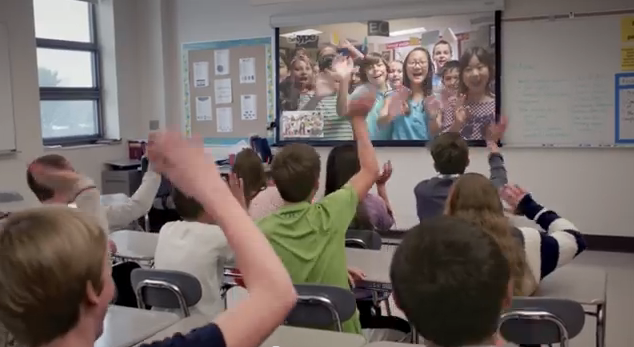|
A student's ability to speak in front of their peers has always been an important real world skill to develop in the school setting. With the evolution of technology, in particular mobile devices, students now have the ability to share their thoughts globally with a few taps of the screen. Being that we now in the year 2016, it's imperative that educators support students efforts to communicate clearly and effectively on smartphones, tablets, and laptops. For the most part, most devices in today's world come equipped with microphones and cameras. It's so easy for students to show what they know or learn more about the world around them by way of a Google Hangout, YouTube video clip, or podcast to name a few. Students must be put in digital situations where they can practice looking into the computer camera, speaking off of digital notes, communicating clearly, social cues during an online group discussion, and making their point with images and text on various presentation platforms. In fact, the same can be said for educators that are leading or participating in a webinar, Skype call, etc. The more teachers provide students with the autonomy to leverage the power of this particular technology, the more opportunities there will be to improve their digital speaking skills. Here are eight tools that can help students communicate in the digital world...
FlipGrid ~ Post a topic or question and have participants respond via recorded video. Blab ~ Watch, record, and participate in live virtual conversations. Google Hangout ~ Conduct live and recorded conversations. SoundCloud ~ Upload, record, share, and promote voice recordings. Voxer ~ Tap to talk web application with image, text, and video capabilities. Skype ~ Video call an individual or groups of people. YouTube ~ Create a maintain your very own online media channel. As you can see there are so many options for kids to show what they know in the digital world through video and voice. Click here to access rubrics aimed at helping understand expectations when put in these types of learning experiences. There are other ways for students to work on their digital speaking skills through apps they already utilize such as Instagram, Snapchat, Twitter, and Facebook. It's important to note that students should have options available to them when they are tasked with having to use this sort of technology. Looking for ideas on how to connect students on a global scale? Check out Connecting Your Students With The World by Blumengarten, Naugle, and Krakower. A one size fits all approach will back fire and limit creativity. The time is now to take a risk and put students in a position to succeed as they communicate and collaborate in the virtual world. Brad Currie is the author of All Hands on Deck: Tools for Connecting Educators, Parents, and Communities and the newly released Personalized PD: Flipping Your Professional Development. He is one of the founding partners of Evolving Educators LLC. Brad is a 2014 ASCD Emerging Leader and Google Certified Trainer. Brad currently serves as a K-8 Supervisor of Instruction and Dean of Students for the Chester School District in Chester, NJ. He is a Google Certified Trainer and speaks nationally about tech integration. Learn more about Brad by following him on Twitter @bradmcurrie or visiting his website at www.bradcurrie.net.
1 Comment
Gord Holden
1/19/2016 11:31:19 am
Have you read the best-selling novel "Ready Player One."? It describes education in 2044 and the ubiquitous use of 3D virtual environments to resolve the plethora of challenges facing 21st century learners and education. This is of course here already, ignored in articles such as this one. Our Immersive Technology program has some 200 gleeful students from across Canada who interact both individually and in groups as large as 100 or more synchronously. These kind of environments are where 21st century learners elect to hang out when not in school. Now they spend their spare time "at school" as well. If anyone cares to find out what I am talking about, check out the YouTube channel for Gord Holden. Or contact me at [email protected].
Reply
Leave a Reply. |
Archives
May 2020
Categories
All
|

 RSS Feed
RSS Feed
